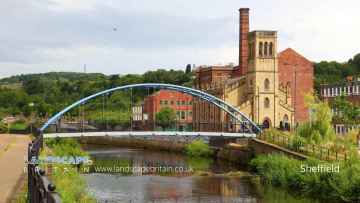Dinnington St. John's
Dinnington St. John's is a Town in the county of South Yorkshire.
Retail in Dinnington St. John's
There are great places to visit near Dinnington St. John's including some great towns, cities, shopping centres and airports.
The area close to Dinnington St. John's boasts some of the best towns including Wath-upon-Dearne.
There are a several good cities in the Dinnington St. John's area like Sheffield, and Doncaster.
Dinnington St. John's's best nearby shopping centres can be found at Meadowhall, and Frenchgate Centre.
Airports to visit near Dinnington St. John's include Doncaster Sheffield Airport.
Dinnington St. John's History
There are some historic monuments around Dinnington St. John's:
Places to see near Dinnington St. John's
History of Dinnington St. John's
Excavations show Dinnington to have been inhabited since at least Neolithic times, and it has been suggested that the settlement takes its name from a local barrow, though a more traditional interpretation of “Dinnington” would be “Dunn’s Farmstead”, or “Town of Dunn’s People”.
Dinnington was originally a small, isolated farming community, based around the New Road area of the town. Quarrying in the area helped expand the population, but it was the sinking of the Dinnington Main Colliery in 1905 that led to the real growth of the settlement. The census of 1911 shows a twenty-fold increase in population since 1901, from 250 to 5,000.
The coal miners initially lived in a prefabricated shanty town in Laughton Common, colloquially known as tin town but later moved into colliery-built terrace houses around the central shopping area of Laughton Road.
Dinnington was an ancient parish which became a civil parish in 1866. In 1954 the civil parish was abolished and merged with the civil parish of St Johns with Throapham, to form the civil parish of Dinnington St John’s.
Dinnington continued to expand throughout the 20th century, largely through the growth of commuter living that followed the Second World War. As the housing estates spread, Dinnington began to merge seamlessly into the neighbouring settlements of Throapham and North Anston. The result is a 2.2 miles (3.5 km) strip of urban development that mainly acts as a commuter base for Sheffield, Rotherham and Worksop, although with the closure of coal mines and steel mills, the area has seen a rapid decline in the late 1980s and early 1990s and despite steady growth, still boasted the highest level of unemployment in the UK in 2001.
Dinnington Colliery was closed in 1992. This damaged the local community, and had a large negative impact on the local economy with initial job losses and knock-on effect closures to local business.











